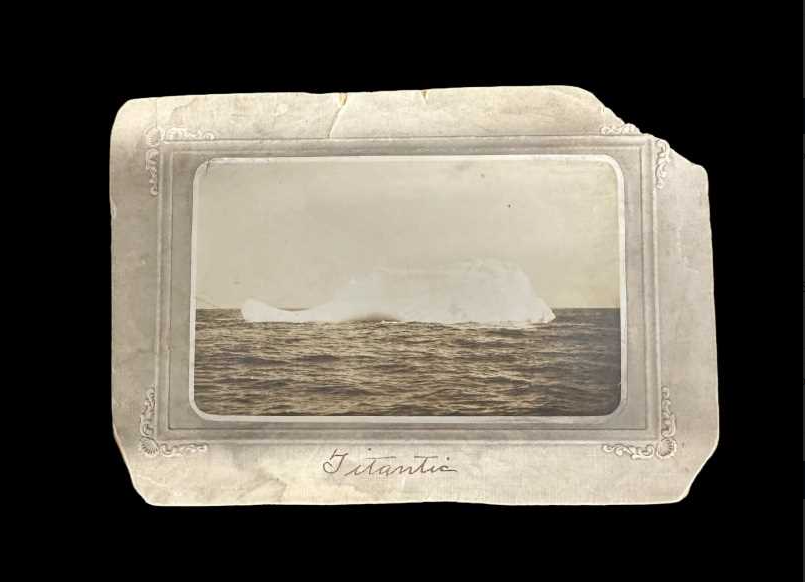
The killer chunk of ice behind the single most famous maritime tragedy in modern history might have been caught in a unique photo.
The rediscovered image is currently on auction and reportedly shows the very same iceberg that caused the Titanic to sink during the frigid early morning hours of April 15th, 1912 taking over 1,500 lives with her.
It’s known that the photo was taken by a Nova Scotian undertaker named John Snow Jr. just under two days after the Titanic sank.
Snow Jr. came to be at the site of the sinking because he traveled there on board the ship C.S MacKay-Bennett as the chief embalmer of the funeral firm John Snow & Co.
This was on April 16th, 1912, the first full day after the mighty ocean liner had spent nearly three hours sinking slowly, even gently, before suddenly breaking in half and finally plunging beneath the waves at roughly 2:20 am on April 15th.

Over 1,500 lives were lost in the catastrophe and even now the exact number of those who went down with the ship isn’t exactly clear.
Only 710 survivors were picked up around dawn of the next day by the Cunard liner Carpathia, which was the first vessel to arrive for rescue efforts.
Snow Jr and his ship were summoned to the wreck site for the sake of retrieving whatever floating bodies they could for transport back to shore and a proper transfer to their families.
The undertaker managed to capture the small, 3-inch by 5-inch photo of a fairly small chunk of iceberg floating close to where his ship was conducting body retrieval. The underwater part of the berg would of course have been much bigger.
The embalmer later framed the photo and gave it the simple caption “Titanic”.
Photo taken 112 years ago of the iceberg which sunk the Titanic on auctionhttps://t.co/cgOJF2QO9a
— CapeTalk on 567AM (@CapeTalk) April 11, 2024
Realistically, it would have been difficult for Snow Jr. to be sure that the iceberg he took his photo of was the one that had actually struck the famous ship.
As Titanic sailed through the frigid waters of the North Atlantic on the night of April 14, it entered a vast and rather dense 98-kilometer-long field of icebergs of all sizes before finally having its hull fatally grazed by one of them.
Accounts by the crew of Carpathia and those of Titanic survivors described seeing numerous icebergs all over that region of ocean as the sun rose the next morning.
Snow’s arrival a full day after that, even if his ship indeed reached the exact wreck site, could have meant an encounter with an entirely different iceberg that had floated into the area.
Nonetheless, it is a very old photo taken where the ship sank, very soon after that tragic sinking, and it’s easy for the public’s historical imagination to fire up enough for this to give the image value.
This is why the photo, which Snow’s family passed down over the generations until selling it to a collector of Titanic memorabilia roughly 30 years ago, is now being auctioned.
The firm conducting the auction, the charmingly named “Henry Aldridge & Son Auctioneers of Devizes” in Wiltshire, UK, is expecting the image to sell for between $5,000 and $8,500.
Current bidding has reached just under 2,500 GPB (British pounds) and the auction still has until the 27th of April to close.
One of the firm’s owners, Andrew Aldridge, is himself the first to admit that there’s uncertainty about the iceberg.
“Nobody can say for sure that this was the iceberg that sank the Titanic,” he mentioned to the UK paper The Mirror.
However, he adds,
“But what we can say is that after the rescue ship Carpathia, the Mackay-Bennett was one of the first ships to reach the wreck site and that the undertaker on board decided to take a photo of this iceberg. He must have had his reasons for taking a photo of this iceberg. He captioned it ‘Titanic’ and mounted it for posterity.”
And that is exactly the essence of why a photo like this has such potential value.
Its definite historical provenance within the time and place of that enormous tragedy leaves just enough room for belief and a touch of morbid wonder.







